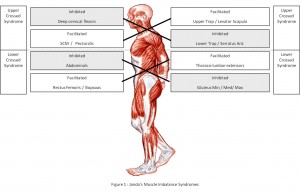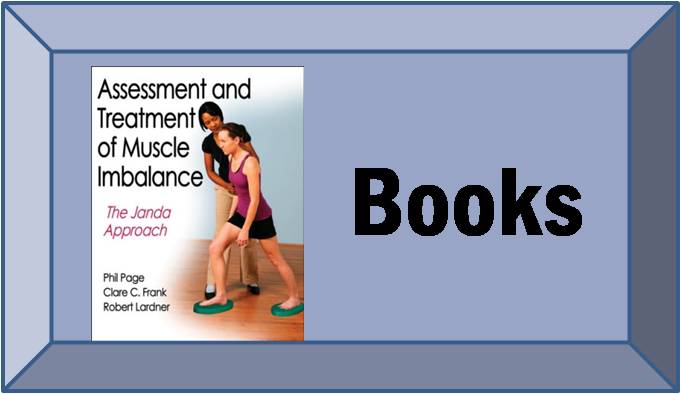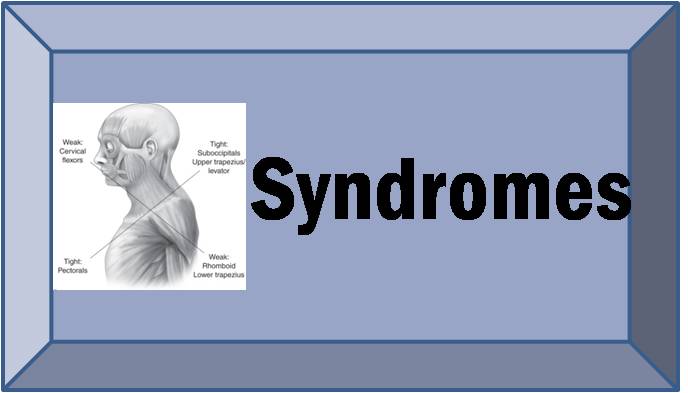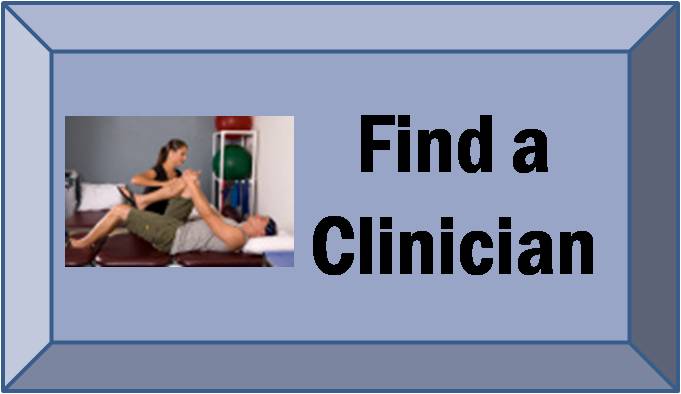Janda Syndromes
Janda’s Crossed Syndromes
Over time, these imbalances will spread throughout the muscular system in a predictable manner. Janda has classified these patterns as “Upper Crossed Syndrome” (UCS), “Lower Crossed Syndrome” (LCS), and “Layer Syndrome” (LS) (Janda, 1987, 1988). [UCS is also known as “cervical crossed syndrome”; LCS is also known as “pelvic crossed syndrome; and LS is also known as “stratification syndrome.”] Crossed syndromes are characterized by alternating sides of inhibition and facilitation in the upper quarter and lower quarter. Layer syndrome, essentially a combination of UCS and LCS is characterized by alternating patterns of tightness and weakness, indicating long-standing muscle imbalance pathology. Janda’s syndromes are summarized in Figure 1.
Upper crossed syndrome is characterized by facilitation of the upper trapezius, levator, sternocleidomastoid, and pectoralis muscles, as well as inhibition of the deep cervical flexors, lower trapezius, and serratus anterior. Lower crossed syndrome is characterized by facilitation of the thoraco-lumbar extensors, rectus femoris, and iliopsoas, as well as inhibition of the abdominals (particularly transversus abdominus) and the gluteal muscles.
By using Janda’s classification, clinicians can begin to predict patterns of tightness and weakness in the sensorimotor system’s attempt to reach homeostasis. Janda noted that these changes in muscular tone create a muscle imbalance, which leads to movement dysfunction. Muscles prone to tightness generally have a “lowered irritability threshold” and are readily activated with any movement, thus creating abnormal movement patterns. These imbalances and movement dysfunctions may have direct effect on joint surfaces, thus potentially leading to joint degeneration. In some cases, joint degeneration may be a direct source of pain, but the actual cause of pain is often secondary to muscle imbalance. Therefore, clinicians should find and treat the cause of the pain rather than focus on the source of the pain.













